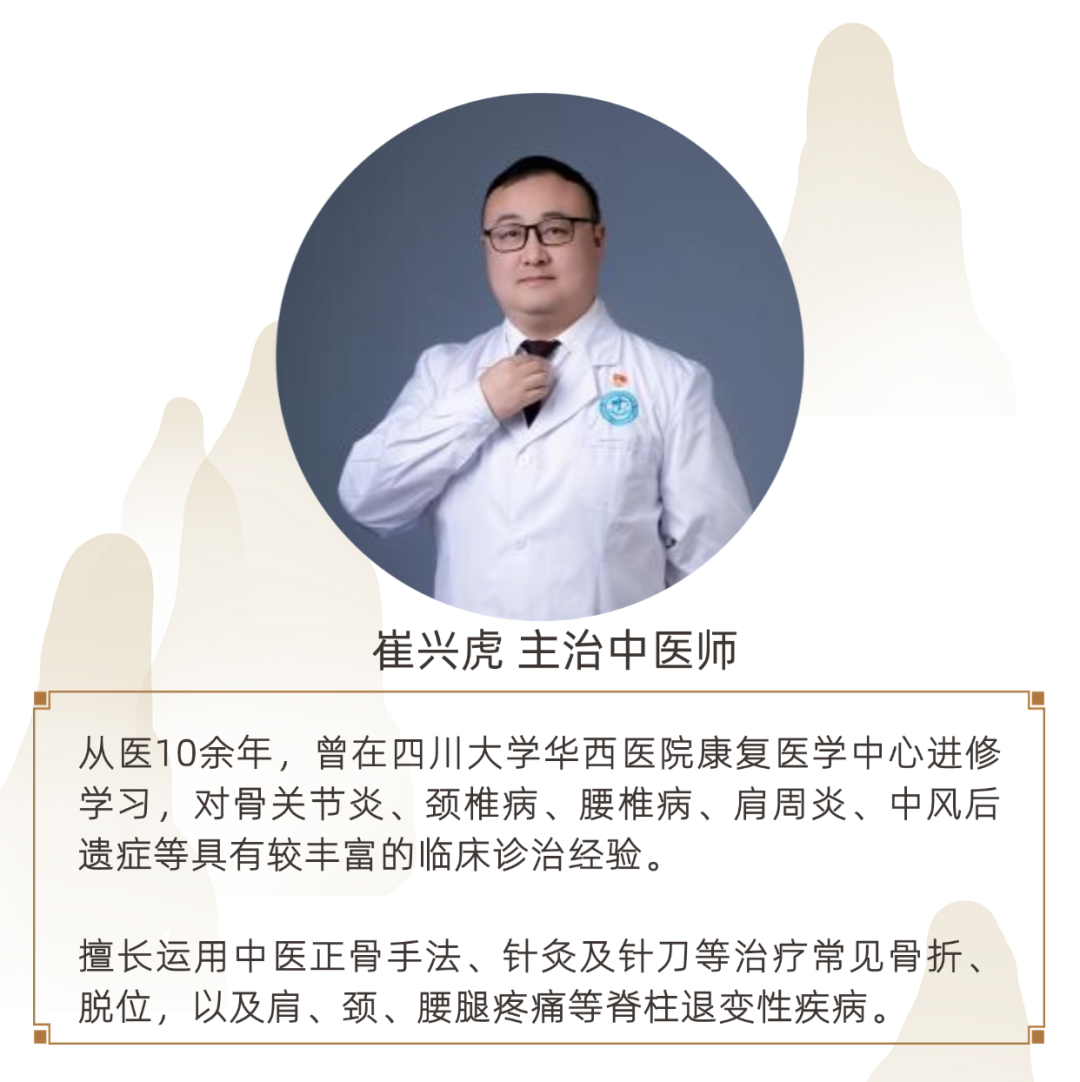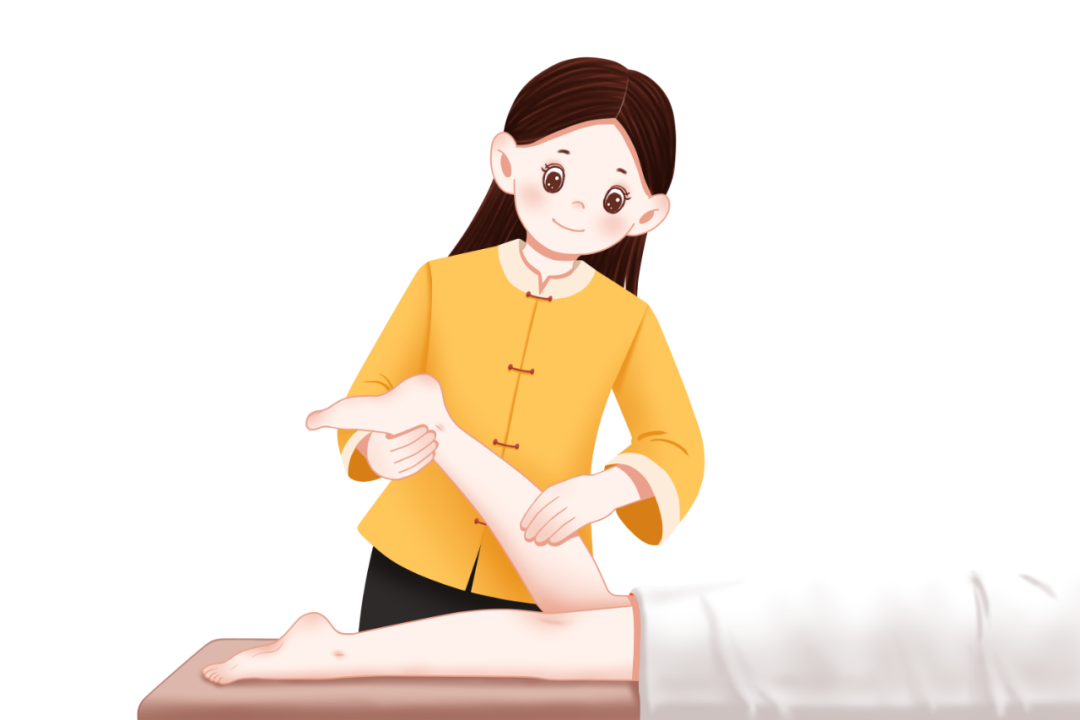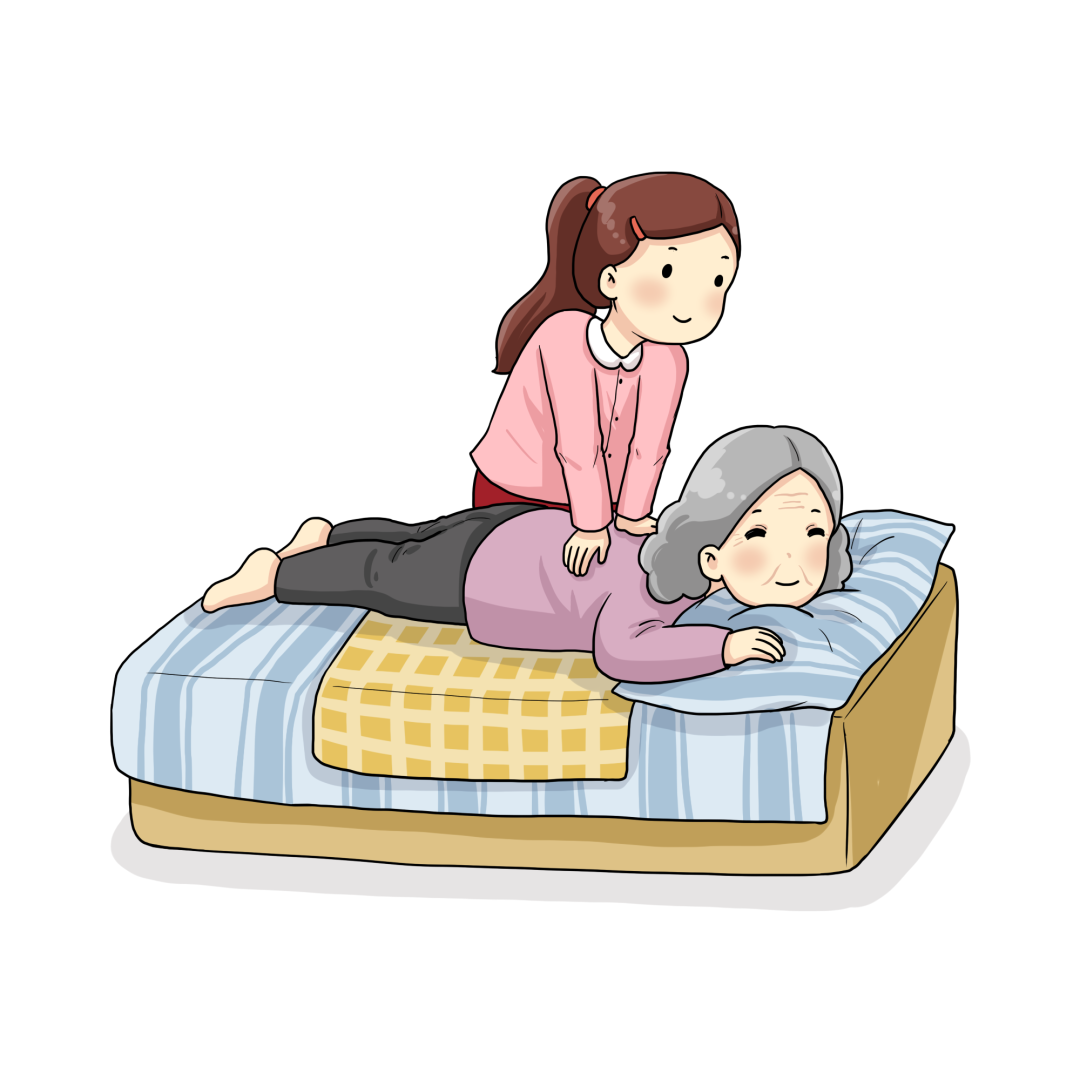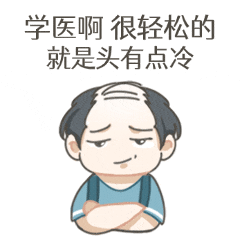

Is this you?
However,
some people feel more comfortable after a massage,
while others not only do not relax after a massage,
but feel worse instead.

Did you know?

This issue,
Dr. Cui Xinghu from the Rehabilitation Department of the Chengdu Traditional Chinese Medicine Hospital
will help you understand the differences between massage and Tui Na.

 Definitions and NatureTui Nais a department in hospitals that specializes in using Tui Na therapy to treat and prevent diseases.Tui Na therapy is one of the external treatment methods in Traditional Chinese Medicine (TCM), guided by TCM theory, applying specific techniques to the body’s meridians, acupoints, or specific areas to achieve the goals of unblocking meridians, adjusting organ functions, and promoting the circulation of Qi and blood.
Definitions and NatureTui Nais a department in hospitals that specializes in using Tui Na therapy to treat and prevent diseases.Tui Na therapy is one of the external treatment methods in Traditional Chinese Medicine (TCM), guided by TCM theory, applying specific techniques to the body’s meridians, acupoints, or specific areas to achieve the goals of unblocking meridians, adjusting organ functions, and promoting the circulation of Qi and blood.
Massage is a broader concept, not limited to the medical field, but also widely used in health care, sports, and other areas.
It mainly involves techniques such as kneading, pinching, pressing, and applying pressure to various parts of the body to achieve effects like muscle relaxation, fatigue elimination, and improved blood circulation.
MassageTherapy
 Treatment Scope and PurposeTui Nais a therapeutic method primarily used to treat musculoskeletal disorders, common neurological diseases, and some internal medicine conditions.Its treatment scope is broad, including orthopedic diseases such as cervical spondylosis, lumbar disc herniation, shoulder periarthritis, and acute lumbar sprains, as well as pediatric conditions like pediatric diarrhea and muscular torticollis.The purpose of Tui Na treatment is not only to relieve symptoms but also to adjust the internal environment of the body, achieving disease treatment and preventing recurrence.
Treatment Scope and PurposeTui Nais a therapeutic method primarily used to treat musculoskeletal disorders, common neurological diseases, and some internal medicine conditions.Its treatment scope is broad, including orthopedic diseases such as cervical spondylosis, lumbar disc herniation, shoulder periarthritis, and acute lumbar sprains, as well as pediatric conditions like pediatric diarrhea and muscular torticollis.The purpose of Tui Na treatment is not only to relieve symptoms but also to adjust the internal environment of the body, achieving disease treatment and preventing recurrence.
Massage, on the other hand, is more commonly applied in health care and fatigue relief.
By adjusting the techniques, intensity, and frequency, massage can help people relax both physically and mentally, alleviating stress.

MassageTherapy Technique and Technical RequirementsTui Nais based on the fundamental theories of TCM, applying differential diagnosis and treatment, with techniques that are more standardized, complex, and diverse.Doctors need to master various Tui Na techniques such as pushing, grasping, kneading, pressing, etc., and provide personalized treatment based on the patient’s specific condition and constitution.Additionally, doctors must have a solid foundation in TCM theory and rich clinical experience to better understand and apply Tui Na therapy.
Technique and Technical RequirementsTui Nais based on the fundamental theories of TCM, applying differential diagnosis and treatment, with techniques that are more standardized, complex, and diverse.Doctors need to master various Tui Na techniques such as pushing, grasping, kneading, pressing, etc., and provide personalized treatment based on the patient’s specific condition and constitution.Additionally, doctors must have a solid foundation in TCM theory and rich clinical experience to better understand and apply Tui Na therapy.
Massage techniques are relatively simple, primarily based on basic methods like kneading, pinching, pressing, and applying pressure.
Although massage therapists also need to possess certain professional skills and knowledge, their technical requirements and complexity are relatively lower.

Moreover, the operational environment and equipment for massage are relatively simple, not requiring the strict medical environment and equipment support like that of Tui Na departments.
Massage

 Professional Requirements and QualificationsTui Nadoctors need to undergo formal medical education and obtain the corresponding medical qualification and practice certificates.They must work in hospitals or related medical institutions and are subject to strict management and supervision. Additionally, Tui Na doctors need to continuously learn and update their knowledge to adapt to the ever-changing medical environment and patient needs.
Professional Requirements and QualificationsTui Nadoctors need to undergo formal medical education and obtain the corresponding medical qualification and practice certificates.They must work in hospitals or related medical institutions and are subject to strict management and supervision. Additionally, Tui Na doctors need to continuously learn and update their knowledge to adapt to the ever-changing medical environment and patient needs.
The requirements for massage therapists are relatively lower, generally only requiring relevant training or assessment and obtaining the corresponding certificates.
They can provide massage services in various places, such as massage shops, beauty salons, gyms, etc. However, it is important to note that massage services provided by non-medical institutions may not offer professional medical advice like Tui Na departments.
Massage Special RemindersTui Na is not suitable for everyone.Be aware of these populations and contraindications:↓↓1. Acute diseases, febrile diseases, various infectious diseases, and benign or malignant tumors.2. Acute phase of inflammation, such as purulent arthritis, tuberculous arthritis, etc.3. Severe internal diseases, such as heart disease, nephritis, and mental illnesses.4. Conditions prone to bleeding, such as diabetes, pulmonary tuberculosis, hemophilia, and thrombocytopenic purpura.5. Infectious and ulcerative skin diseases, such as leprosy, ringworm, open injuries, and burn wounds.6. Women during pregnancy, menstruation, or postpartum with unexpelled lochia.Warm reminder from Wen Xiaowei:Always distinguish between the differences between massage and Tui Na.When feeling unwell, promptly visit a legitimate medical institution.Seek targeted treatment under the guidance of a doctor,especially for the elderly.For sudden symptoms likechest pain, back pain, stomach pain, or limb numbness,ensure to rule out cardiovascular and cerebrovascular diseases before proceeding with massage treatment to avoid delaying the condition.Contributed by: Dr. Cui Xinghu, Chengdu Traditional Chinese Medicine HospitalEditor: Wang XiaochunChief Editor: Yang KaiReviewed by: Wu Jiaquan
Special RemindersTui Na is not suitable for everyone.Be aware of these populations and contraindications:↓↓1. Acute diseases, febrile diseases, various infectious diseases, and benign or malignant tumors.2. Acute phase of inflammation, such as purulent arthritis, tuberculous arthritis, etc.3. Severe internal diseases, such as heart disease, nephritis, and mental illnesses.4. Conditions prone to bleeding, such as diabetes, pulmonary tuberculosis, hemophilia, and thrombocytopenic purpura.5. Infectious and ulcerative skin diseases, such as leprosy, ringworm, open injuries, and burn wounds.6. Women during pregnancy, menstruation, or postpartum with unexpelled lochia.Warm reminder from Wen Xiaowei:Always distinguish between the differences between massage and Tui Na.When feeling unwell, promptly visit a legitimate medical institution.Seek targeted treatment under the guidance of a doctor,especially for the elderly.For sudden symptoms likechest pain, back pain, stomach pain, or limb numbness,ensure to rule out cardiovascular and cerebrovascular diseases before proceeding with massage treatment to avoid delaying the condition.Contributed by: Dr. Cui Xinghu, Chengdu Traditional Chinese Medicine HospitalEditor: Wang XiaochunChief Editor: Yang KaiReviewed by: Wu Jiaquan

